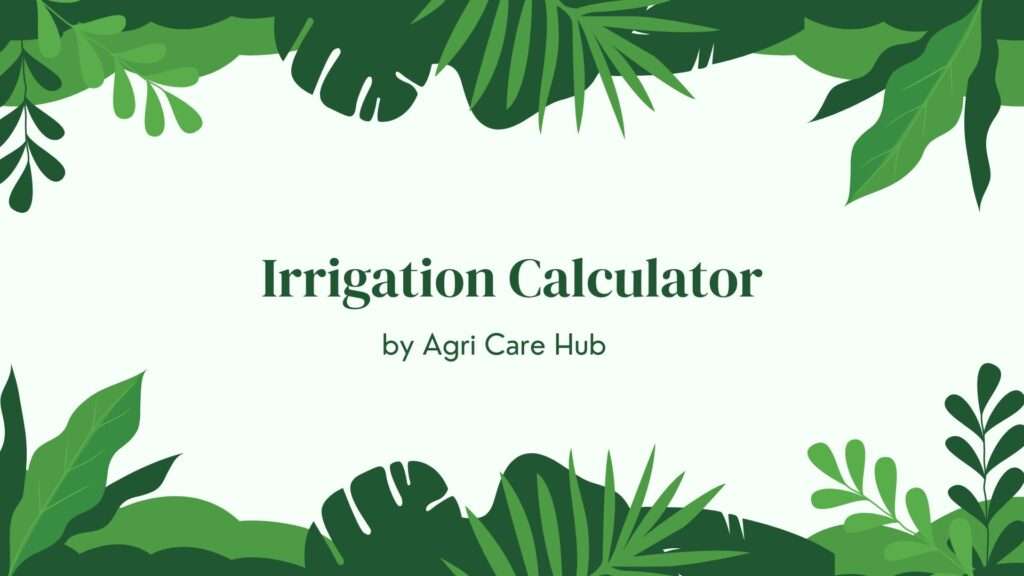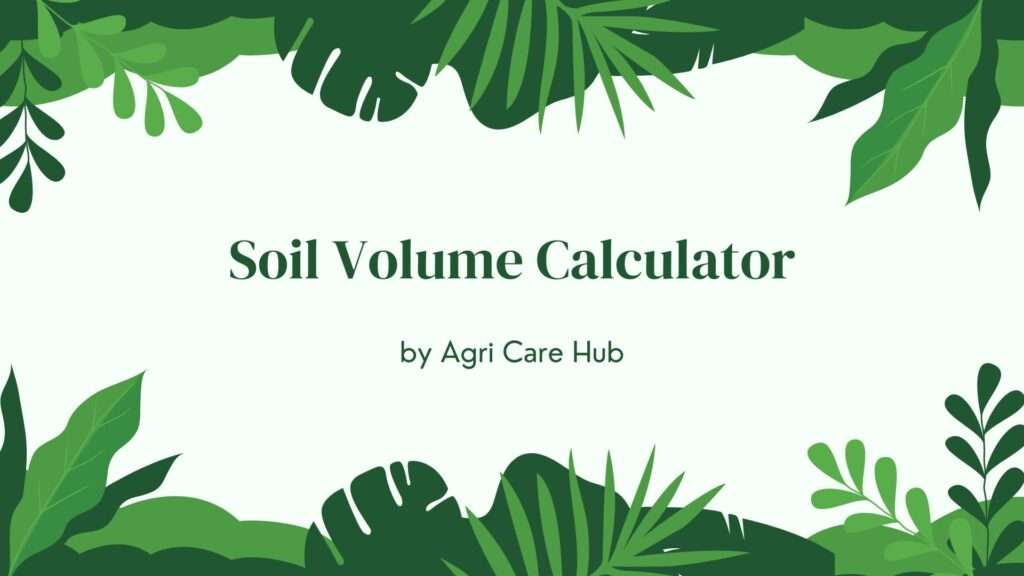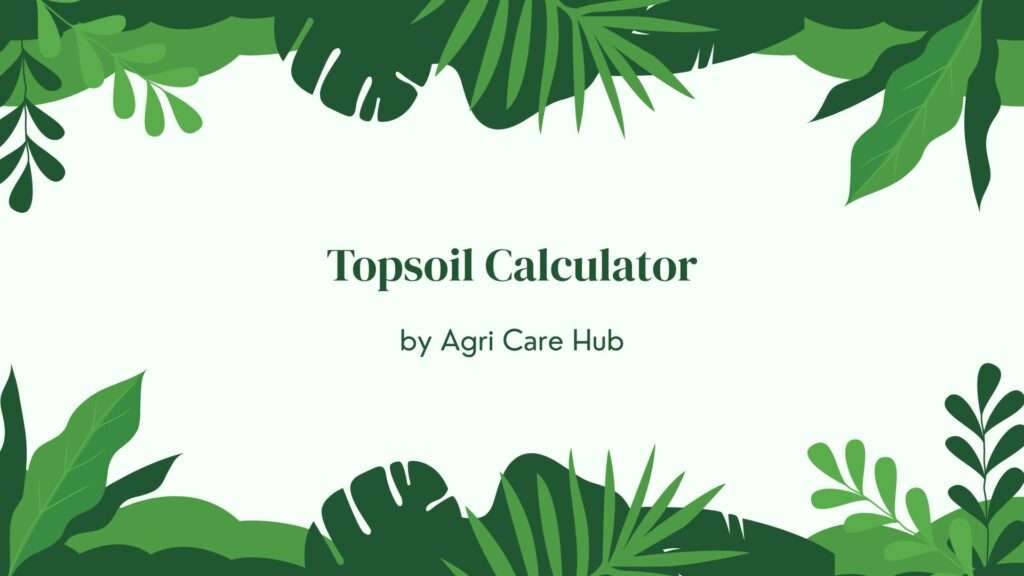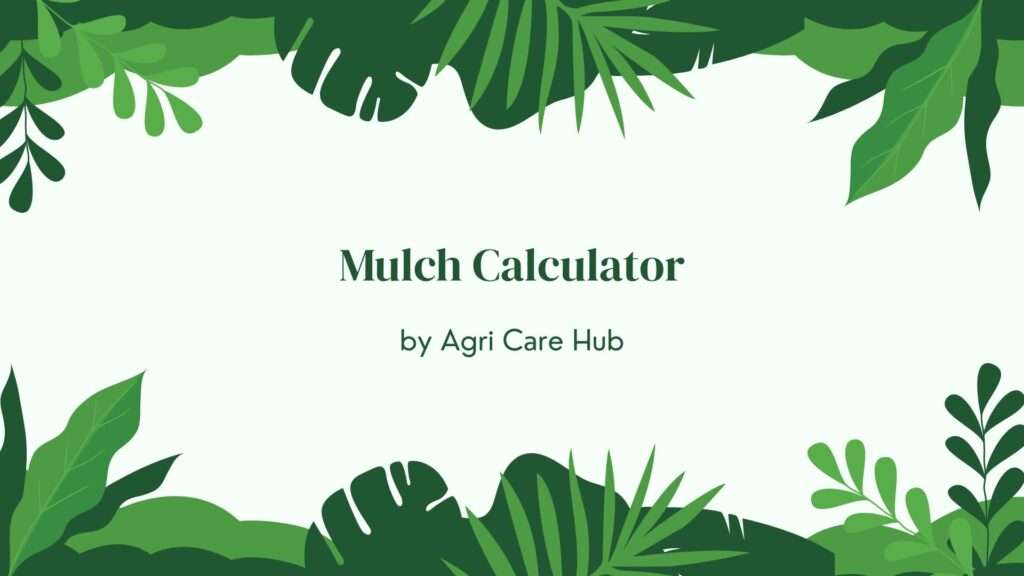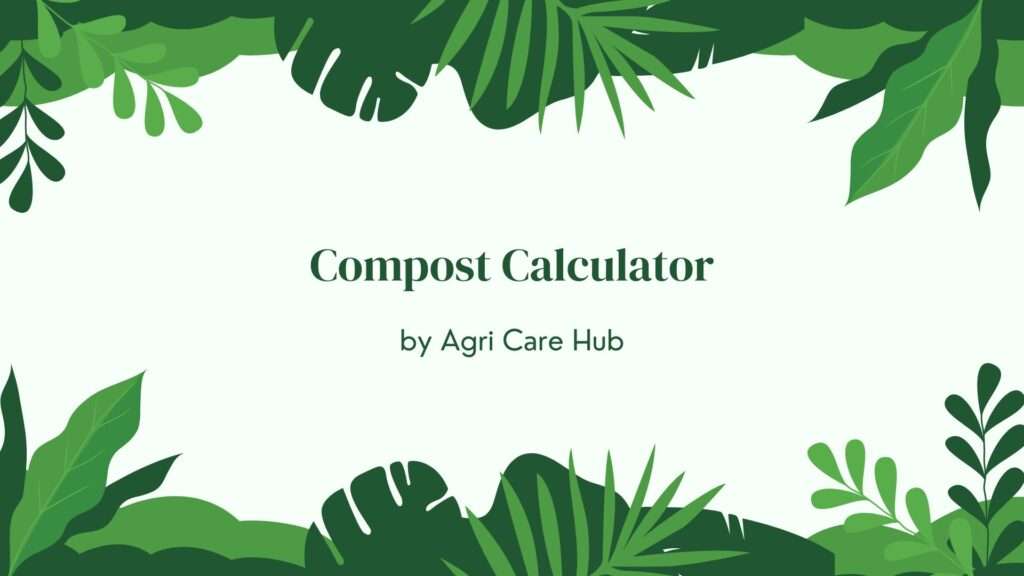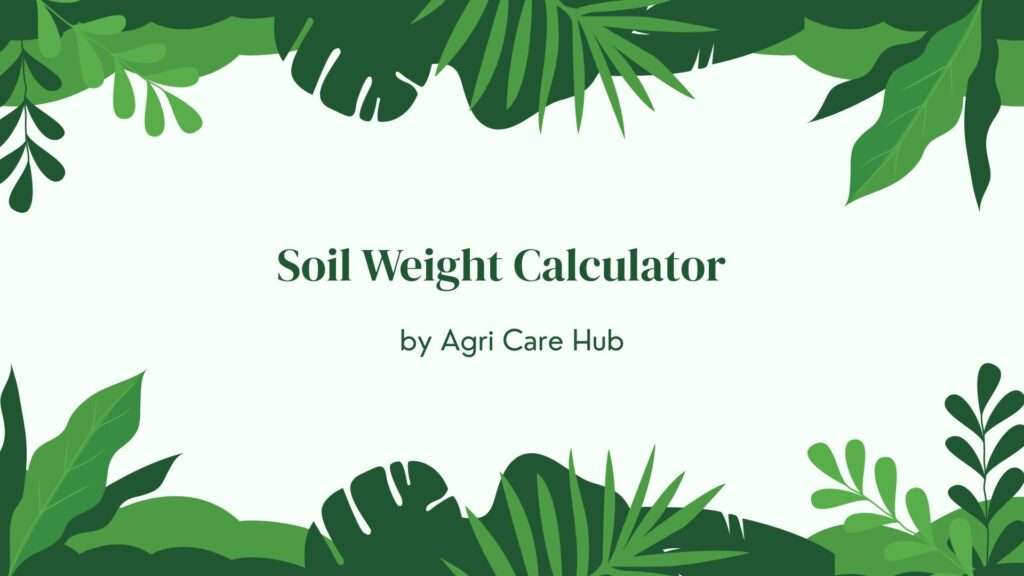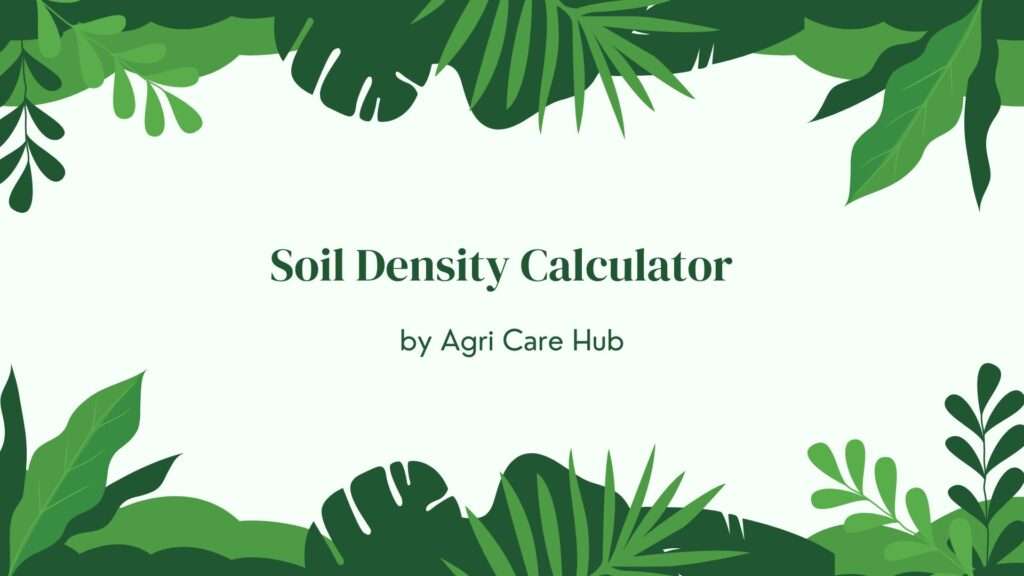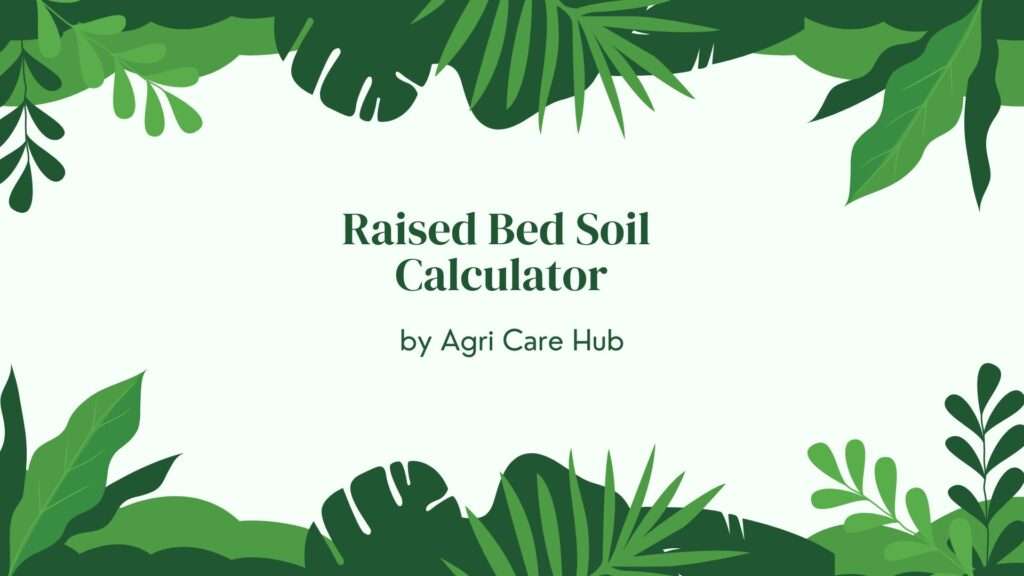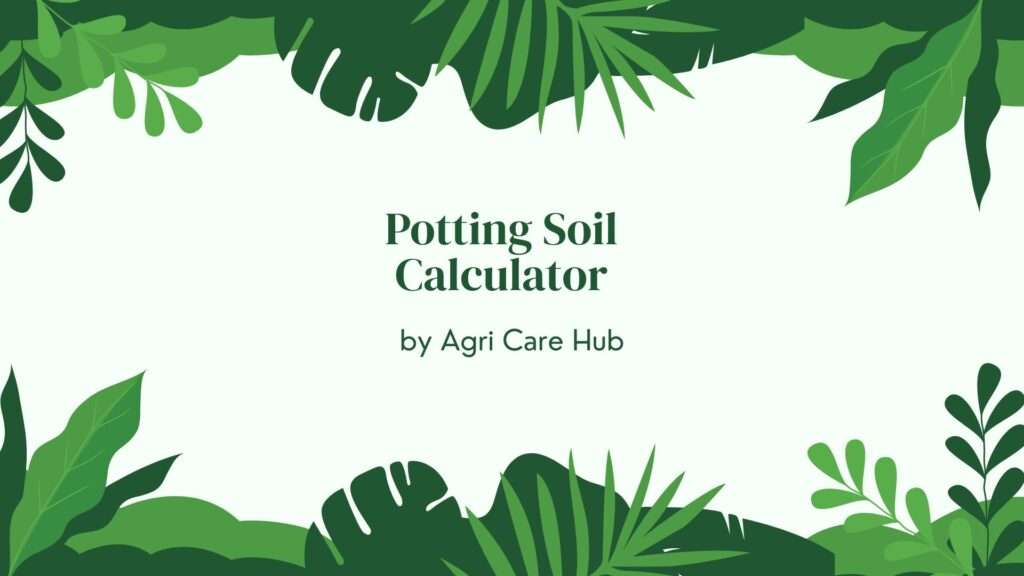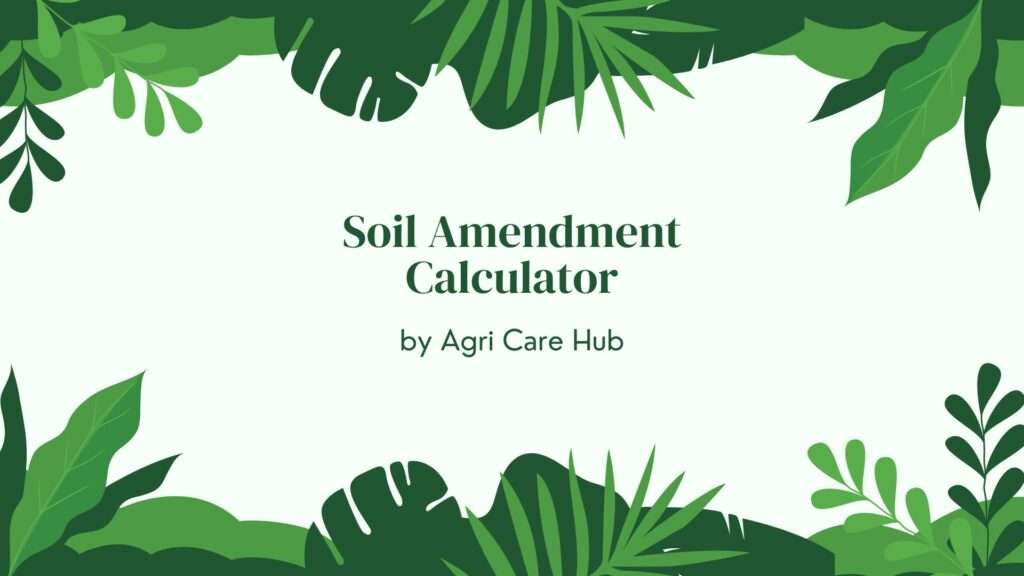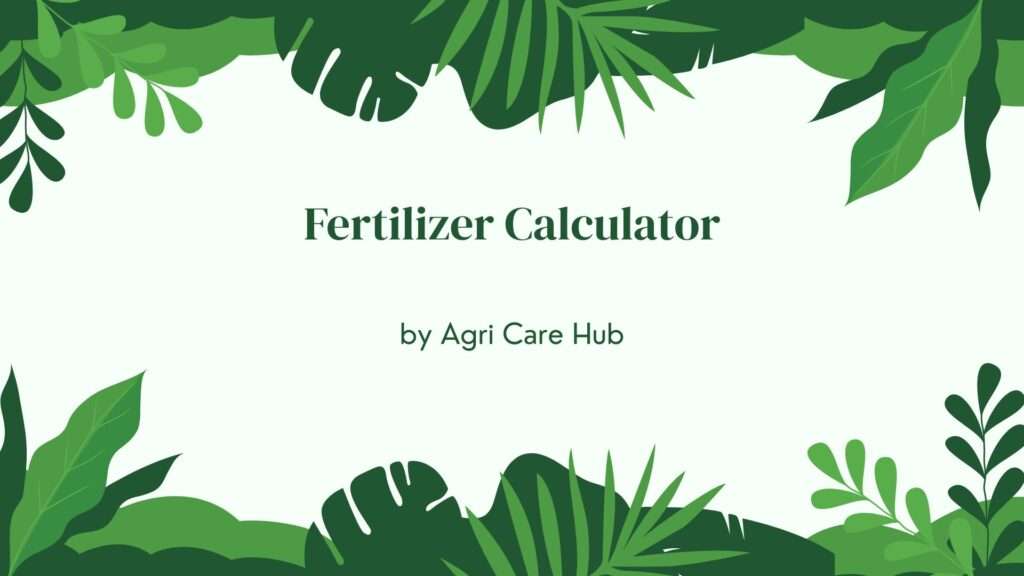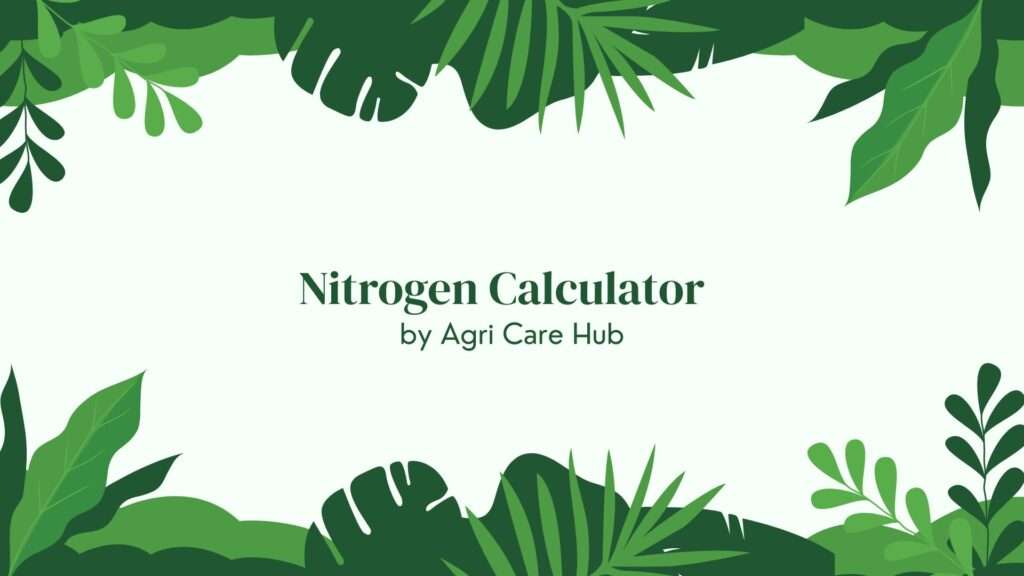Irrigation Calculator
About the Irrigation Calculator
The Irrigation Calculator is a scientifically designed tool to help farmers and agricultural professionals determine precise irrigation needs for optimal crop growth. By inputting crop type, soil type, field area, evapotranspiration rate, and current soil moisture, this tool uses verified formulas to provide accurate irrigation recommendations. Proper irrigation is crucial for plant health, ensuring efficient water use and nutrient uptake. Developed with insights from Agri Care Hub, it promotes sustainable farming. Learn more about Irrigation.
Importance of the Irrigation Calculator
Irrigation is a cornerstone of modern agriculture, directly affecting crop yield and quality by providing water when natural rainfall is insufficient. Inadequate irrigation can lead to drought stress, reduced growth, and lower yields, while over-irrigation can cause waterlogging, nutrient leaching, and environmental degradation. The Irrigation Calculator addresses these challenges by calculating precise water requirements based on crop and soil characteristics, ensuring efficient water use and sustainable farming practices.
By aligning with precision agriculture principles, this tool supports data-driven irrigation decisions, optimizing water resources and minimizing environmental impact. It incorporates methodologies from soil science and agronomy, such as the Penman-Monteith equation for evapotranspiration, to deliver reliable results. This helps farmers conserve water, reduce costs, and protect ecosystems.
User Guidelines
To use the Irrigation Calculator effectively, follow these steps:
- Select Crop Type: Choose the crop you are growing, as water requirements vary by crop.
- Identify Soil Type: Determine your soil type (sandy, loam, or clay) through a soil test or consultation with an agricultural extension service.
- Enter Field Area: Input the field area in hectares to calculate total water needs.
- Provide Evapotranspiration Rate: Enter the daily evapotranspiration rate (mm/day), available from weather stations or agricultural services.
- Measure Current Soil Moisture: Input the current soil moisture percentage, obtained from soil sensors or a soil moisture calculator.
- Calculate: Click the "Calculate Irrigation Needs" button to receive irrigation recommendations.
- Apply Recommendations: Implement the suggested irrigation volume and schedule, adjusting for local conditions.
Consult a local agronomist to validate recommendations, as regional climate and soil factors may influence results.
When and Why You Should Use the Irrigation Calculator
The Irrigation Calculator is ideal during the growing season, particularly when planning irrigation schedules or responding to signs of water stress in crops. Use it when:
- You have weather data and soil moisture measurements to optimize irrigation.
- You aim to maximize crop yield while conserving water resources.
- You are adopting precision agriculture for data-driven water management.
- You want to reduce environmental impacts like runoff and water waste.
This tool ensures irrigation aligns with scientific principles, preventing under- or over-watering. It supports sustainable farming by optimizing water use, reducing runoff, and helping farmers comply with environmental regulations.
Purpose of the Irrigation Calculator
The primary purpose of the Irrigation Calculator is to provide farmers and agricultural professionals with a reliable, science-based tool to determine irrigation requirements for crops. By integrating crop type, soil properties, and weather data, it delivers precise recommendations that enhance crop productivity, improve water use efficiency, and promote sustainable agricultural practices. The tool simplifies complex irrigation scheduling, making it accessible to users of all expertise levels.
It also serves as an educational resource, raising awareness about the importance of efficient irrigation in agriculture and the environmental consequences of poor water management. By offering actionable insights, it empowers users to make informed decisions that benefit their crops and the environment.
Scientific Basis of the Irrigation Calculator
The Irrigation Calculator is grounded in established agronomic and soil science principles, using the crop water requirement model based on the Penman-Monteith equation and soil water balance. Key factors include:
- Crop Type: Each crop has specific water needs (e.g., corn: 500–800 mm/season, rice: 800–1200 mm/season).
- Soil Type: Sandy soils hold less water (0.1–0.2 cm³/cm³), while clay soils retain more (0.4–0.5 cm³/cm³).
- Evapotranspiration (ET): Daily ET rate (mm/day) drives crop water loss.
- Soil Moisture: Current moisture levels determine the deficit to field capacity.
The calculator estimates irrigation needs by calculating the water deficit: (Crop ET × Crop Coefficient) - Available Soil Water. Recommendations account for soil water-holding capacity and field area, ensuring accurate and practical results.
Benefits of Using the Irrigation Calculator
Using the Irrigation Calculator offers numerous benefits, including:
- Precision: Tailored irrigation recommendations based on crop and soil data.
- Water Efficiency: Optimize water use, reducing waste and costs.
- Environmental Protection: Minimize runoff, preserving water and soil quality.
- Improved Yields: Ensure crops receive adequate water for optimal growth.
- Sustainability: Support eco-friendly irrigation practices.
By integrating this tool, farmers contribute to sustainable agriculture while achieving better economic outcomes.
How to Interpret Results
The calculator provides irrigation volume in liters per hectare and a suggested irrigation schedule. For example, a result of "Irrigation Needed: 30,000 L/ha" suggests applying 30,000 liters of water per hectare to meet crop needs. If soil moisture is at or above field capacity, minimal irrigation may be required. Always verify inputs like ET rate and consult an agronomist to adjust for local climate and irrigation system efficiency.
Additional Resources
For more information on irrigation management, visit Agri Care Hub for expert advice and resources. To understand irrigation concepts, explore Irrigation on Wikipedia. Local agricultural extension services and weather stations can provide region-specific guidance to complement the calculator’s recommendations.
Understanding Irrigation in Agriculture
Irrigation is the artificial application of water to crops to support growth when rainfall is insufficient. It is critical for maintaining soil moisture, nutrient uptake, and crop health, especially in arid or variable climates. The Irrigation Calculator uses weather and soil data to ensure precise water application, preventing issues like drought stress or waterlogging. Factors like soil type, crop stage, and evapotranspiration influence irrigation needs, which this tool accounts for through standardized calculations.
Efficient irrigation enhances crop productivity while conserving water, a critical resource in sustainable agriculture. This tool simplifies the process, making it accessible to all farmers.
Practical Applications of the Irrigation Calculator
The Irrigation Calculator is versatile, suitable for small-scale farms, commercial operations, and research purposes. It is particularly valuable for:
- Irrigation Scheduling: Plan water applications based on precise crop and soil data.
- Water Conservation: Optimize irrigation to reduce water use and costs.
- Environmental Management: Minimize runoff and leaching to protect ecosystems.
- Crop Health Monitoring: Ensure adequate water supply during critical growth stages.
By incorporating this tool, farmers can enhance water management and contribute to sustainable agriculture.

